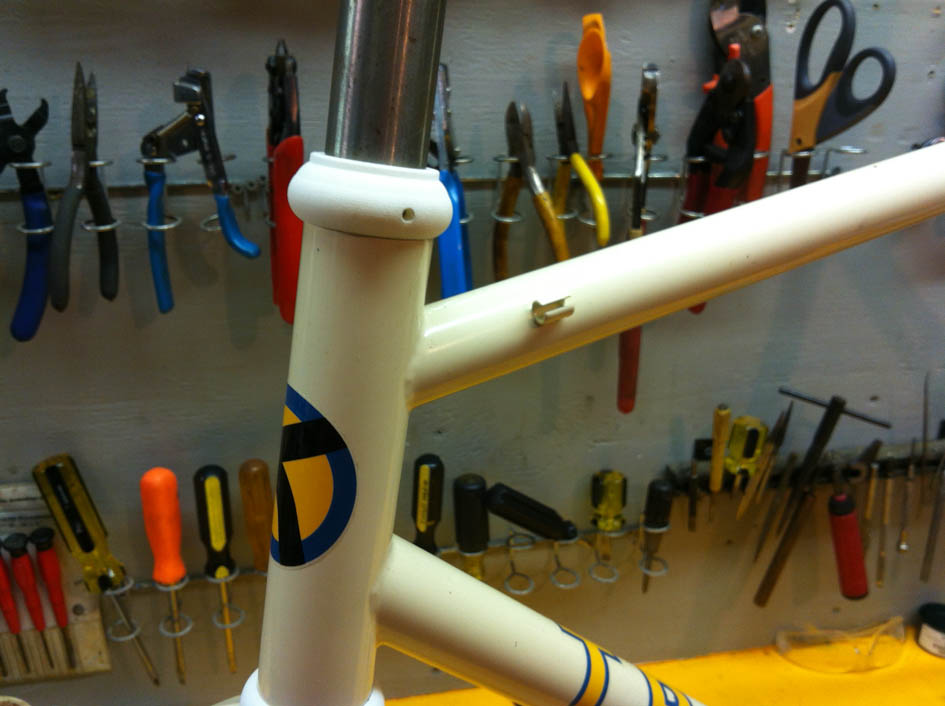Most framebuilders, and a lot of bike shops, will have a frameset (that's frame and fork, for the uninitiated) around the shop for some time before the headset is ready to be installed. Optimally, they're able to be kept together and protected - both from things around the shop and from each other - and the natural solution is to temporarily install the fork in the head tube. For a variety of reasons, though, you don't always want to install a headset just yet, and in those cases it's useful to have a dummy that approximates the size and shape of the headset that you're eventually going to use.
When I was building bikes, I made a batch of dummy headsets out of aluminum on my lathe. It was a fun project, but it took a while and the finished thing didn't look at all like the headsets (usually Chris King) that I was installing on the bikes when they were done. Moreover, a lot of small time builders either don't have access to a lathe or don't have the time/energy/gumption to build dummy headsets themselves.
So I spent an hour or two and modeled this one. It's a damn close copy to a King 1-1/8" NoThreadSet, but SLA printed. I included two holes in the top "cup" that I'll tap out and install set screws in. When the dummy is installed on the frameset, the set screws can be tightened down to keep the whole thing together. Because the dummy is plastic, it won't mar the frame, and because it's dimensionally accurate, it could be used to mock up the steering column for use in rack building, component setup, etc.
I need to make a few small changes to reduce printing mass, but in the meantime the design files for these parts are all in a GitHub repo. If I can find a way to get the cost down a bit, I'm hoping to put them up for sale for other folks to use; drop me a line if you're interested.

